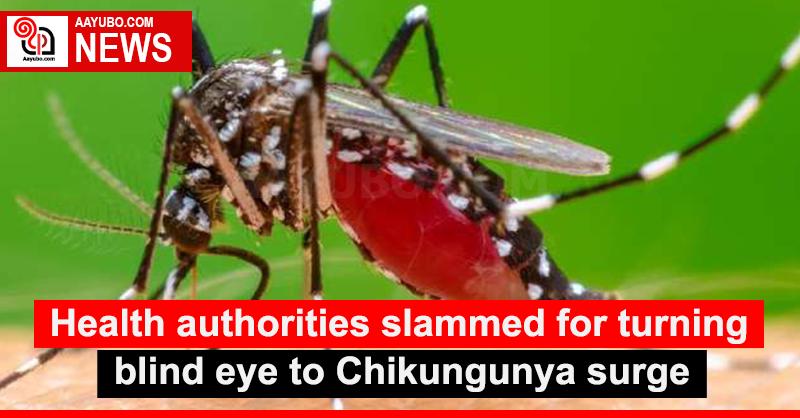Health authorities slammed for turning blind eye to Chikungunya surge

Health authorities are under fire for failing to issue relevant guidelines to contain Chikungunya in light of its rapid rise across the country.
Speaking to the Daily Mirror, PHI Union Head Upul Rohana said that although measures to prevent Dengue have long been in place, there has been no proper guidance from health officials on how to control the spread of Chikungunya.
“This, despite the fact that both diseases are transmitted by the same mosquito species and largely require the same preventive steps,” he pointed out.
“We already have the tools and methods being used for Dengue control, but we are not being directed to apply them to Chikungunya putting us in a state of confusion,” Rohana charged.
“What makes the situation more concerning is that while Dengue cases appear to be declining, Chikungunya infections are surging in several parts of the country,” he added.
He also noted that Chikungunya is not a notifiable disease under their records and hence, they do not have accurate data regarding the cases.
Meanwhile, Consultant Physician Dr. Achala Balasuriya told Daily Mirror that Chikungunya is spread through the bite of infected Aedes mosquitoes, primarily Aedes aegypti and Aedes albopictus.
“These mosquitoes become infected when they bite someone already carrying the virus. After an incubation period of 4 to 7 days, they can spread it to others through bites,” she said.
She warned that these mosquitoes are most active in the early morning and late afternoon and typically breed in stagnant water collected in containers such as flower pots, tires, buckets, and clogged drains.
“Chikungunya doesn’t spread directly from person to person but it’s only through mosquito bites,” Dr Balasuriya stated.
Dr. Balasuriya also noted that Chikungunya cases are on the increase and the joint pain lasts at least a month after recovery, and sometimes even longer.
She added that the main symptoms include sudden high fever, severe joint pain, muscle aches, headaches, nausea, fatigue, and skin rashes. “While most people recover in about a week, the joint pain can linger for months or even years, especially in older individuals.”
Daily Mirror’s continuous attempts to contact Chief Epidemiologist failed.
109 Views







Comments